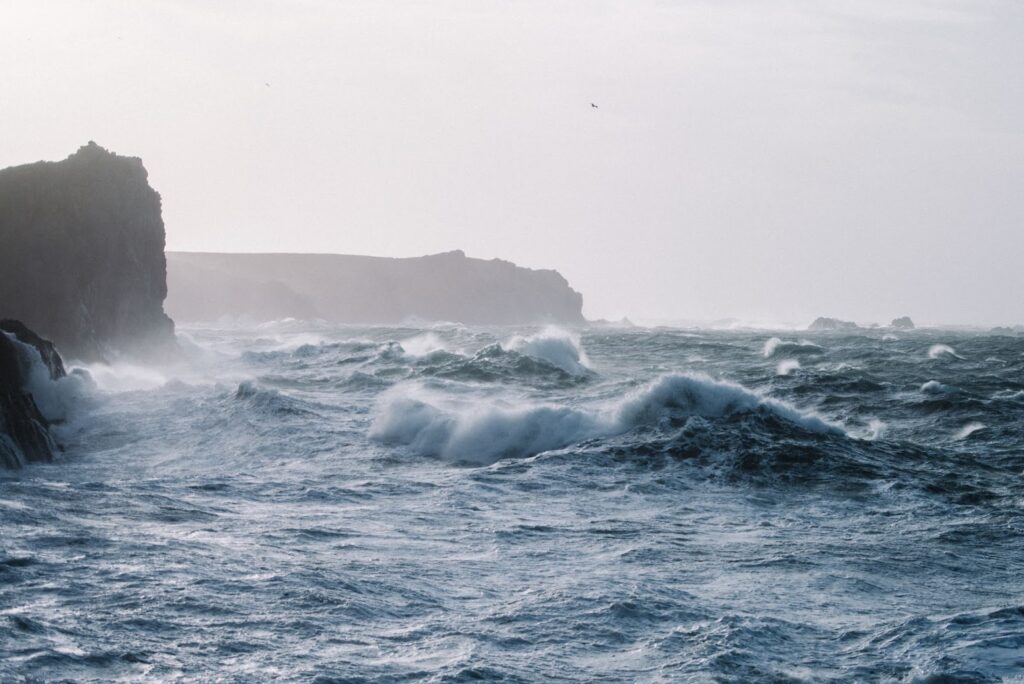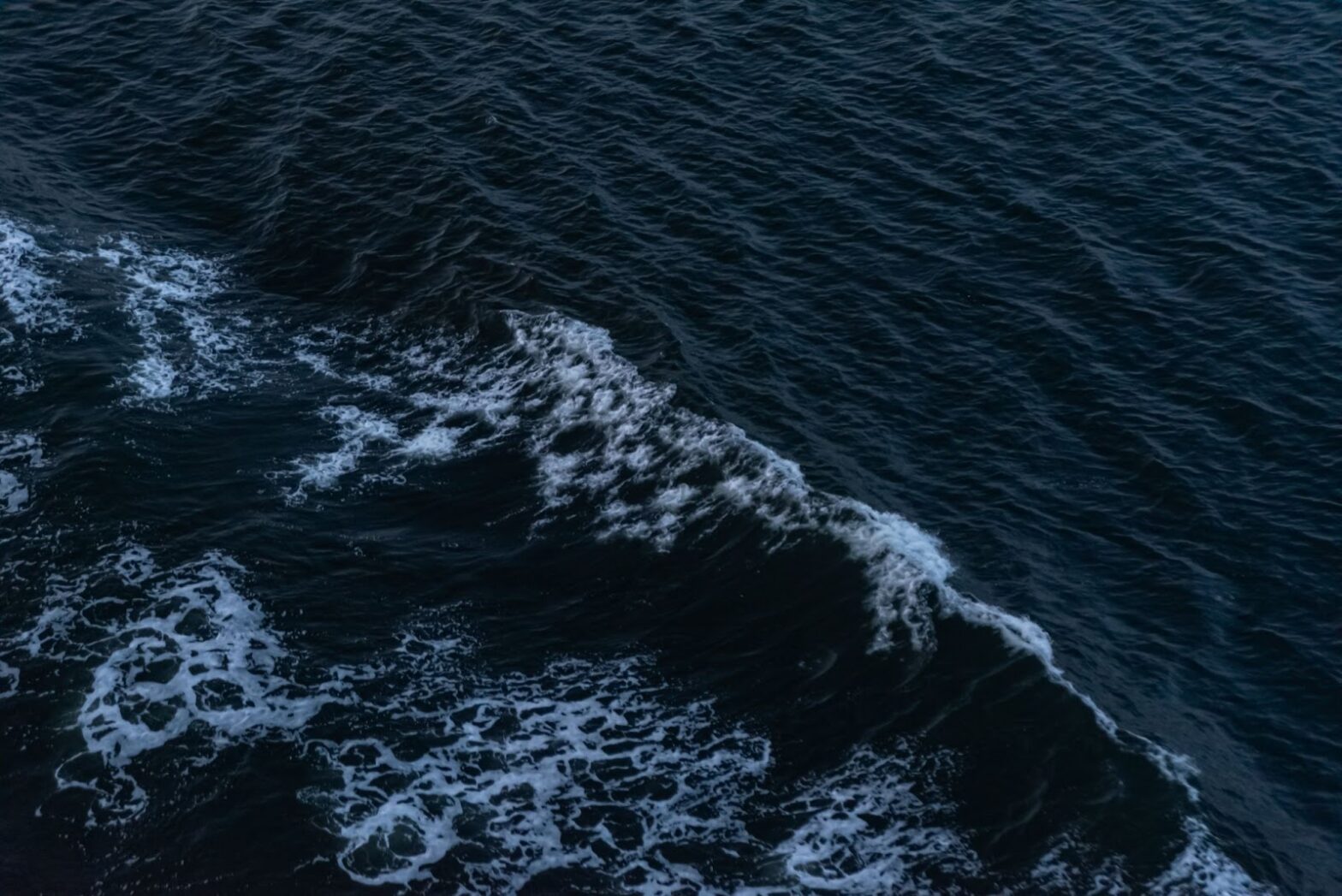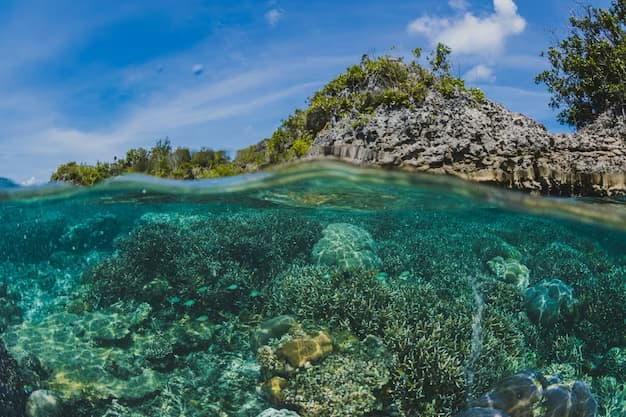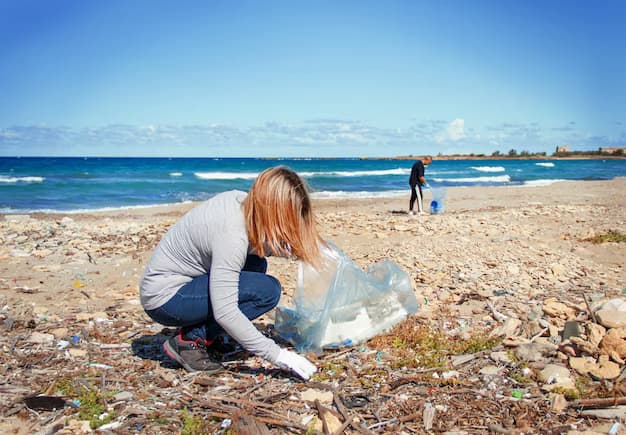For millennia, the bountiful and fertile waters of the Atlantic Ocean have sustained numerous cultures across the globe, providing sustenance and means of livelihood. This vast body of water, ranking as the second largest on Earth, holds the status of a life-sustainer, deeply intertwined with the existence of countless communities. Beyond its role as a provider, the Atlantic Ocean has served as a pivotal catalyst in shaping significant historical events, ranging from remarkable triumphs to heartbreaking tragedies. Delve deeper into the realm of the Atlantic Ocean to uncover a plethora of captivating facts and insights.
Dive Deeper: Unpacking the Fascinating Facts of the Atlantic Ocean
A Hub of Marine Diversity
The Atlantic Ocean, with its nutrient-rich waters, serves as a thriving habitat for a plethora of marine life. It’s a fishing paradise, boasting some of the world’s wealthiest fishing grounds. Here are a few key species that contribute to the Atlantic’s bustling marine ecosystem:
- Mackerel: These swiftly swimming, torpedo-shaped fish are a common catch in Atlantic waters. Their oily flesh is not just favored for its flavor, but also for its rich Omega-3 content;
- Cod: Atlantic cod, recognized for its flaky white meat, is a staple in various cuisines across the world. It also plays a crucial role in the ocean’s food chain;
- Haddock: This species is widely sought after for its mild flavor and delicate texture. Haddock supports a significant portion of the Atlantic commercial fisheries;
- Herring: Known for their silver-blue hue, herring form massive school and are crucial to the Atlantic ecosystem. They serve as a rich source of food for larger marine predators.
Diving into the Abyss: The Puerto Rico Trench
The Atlantic doesn’t just skim the surface of earth’s geography, it delves right into its depths. The lowest point is the Puerto Rico Trench, an awe-inspiring chasm reaching over 8,500 meters deep. Situated near the border of the Atlantic Ocean and the Caribbean Sea, this trench is a testament to the Atlantic’s geological grandeur.
A Tale of Tectonic Drift: The Birth of the Atlantic Ocean
Contrary to popular perception, the Atlantic Ocean doesn’t hail from the primordial history of Earth. In fact, relative to the other world’s oceans, the Atlantic is a youngster, believed to have originated in the Jurassic Period.
Tracing back around 130 million years, the Atlantic was born out of a monumental tectonic shift. The Americas, Africa, and Europe, previously constituents of the ancestral super-continent Pangaea, began to break apart. This colossal drift gave rise to the Atlantic Ocean we know today.
Split by the Equator: The North and South Atlantic
The Atlantic Ocean, cloaked by the hemispheres, is bifurcated by the Equator into the North Atlantic and South Atlantic. Each segment has its unique characteristics, influenced by their geographical position, climate variations, and species diversity. The North Atlantic, for instance, is home to the infamous Bermuda Triangle, while the South Atlantic houses the unique ecosystem of the Falkland Islands.
Discovering the North Atlantic: A Bridge Between Worlds
The North Atlantic Ocean is a vast waterbody that separates two prominent continents – Europe and the Americas. Often perceived as a meeting point of the old and new worlds, the North Atlantic has been instrumental in shaping the course of civilization’s history and progression.
Interestingly, it’s affectionately referred to as “The Pond” by the British and Irish. This term, implying a small body of water, humorously downplays the enormity of the ocean, sparking images of a backyard pond rather than an expansive ocean.
The Majestic Greenland: A Jewel in the Atlantic Crown
Greenland, a land renowned for its icy landscapes and diverse wildlife, holds the title of being the largest island in the Atlantic Ocean. With its land area measuring a whopping 2.16 million square kilometers, it is roughly three times the size of Texas, USA. Its stunning glaciers, vibrant Aurora Borealis, and unique Inuit culture make it a remarkable highlight of the Atlantic.
Milestones of Human Endeavors: The Atlantic Crossings
The Atlantic Ocean has been a witness to human ingenuity and perseverance. It was the first ocean to have been successfully traversed by both ship and airplane. These milestones stand as triumphant demonstrations of humankind’s ceaseless pursuit of discovery and thirst for adventure.
The Roaring Forties: The Wild Southern Atlantic
In the southern expanse of the Atlantic lies an intriguing region known as the “Roaring Forties.” This area, nestled between the tips of South America and South Africa, gets its moniker from the brutal winds and towering waves that characterize its weather patterns. It is a fascinating yet formidable representation of nature’s untamed power. However, seasoned sailors and maritime explorers have long leveraged these intense wind patterns for swift oceanic crossings, making the Roaring Forties a celebrated feature of maritime navigation.
Decrypting the Bermuda Triangle: Atlantic’s Most Mysterious Corner
Arguably the most renowned enigma of the Atlantic Ocean is the Bermuda Triangle—an allegedly treacherous area shrouded in mystery and folklore. Situated in the western part of the Atlantic, it is infamous for the unexplained vanishings of ships and aircraft. Its vertices are commonly believed to be at Miami, Florida, Bermuda, and San Juan, Puerto Rico—forming a triangle of perplexity and intrigue. Numerous explanations, grounded in both science and myth, attempt to decode the Bermuda Triangle phenomenon. These range from magnetic anomalies affecting navigational equipment to more far-fetched theories involving alien abductions!
Surtsey: A Testament to Nature’s Creative Force
By the coast of Iceland, in the northern reaches of the Atlantic, lies an island that didn’t exist until the mid-20th century. Named Surtsey, this island was born out of a volcanic eruption underwater in 1963. Such nascent land masses offer invaluable insights into ecological succession, that is, how life begins and flourishes in new environments. UNESCO acknowledges this unique scientific value, declaring Surtsey a World Heritage Site in 2008.
The Atlantic Ocean: A Vast Marine Expanse
Ranking as the world’s second-largest ocean, the Atlantic spans an enormous area of about 106 million square kilometers. Its expansive waters cover approximately one-fifth of the Earth’s surface—a testament to its vastness. This sprawling marine realm stretches from the icy Arctic in the north to the Southern Ocean’s edge, providing a diverse array of habitats for marine life.
Coelacanths: The Atlantic’s “Living Fossils”
The coelacanth— a fish assumed to have disappeared from the face of the Earth over 60 million years ago— made an astonishing comeback in 1938, when it was discovered alive and well in the South Atlantic waters near South Africa. This relic of prehistoric times provides an intriguing glimpse into an era when dinosaurs still roamed the Earth. Coelacanths are a classic example of a “Lazarus taxon”— species that reappear in the fossil record after a period of perceived extinction.
Atlantic: A Name Anchored in Greek Mythology
The etymology of the term ‘Atlantic’ traces back to ancient Greek mythology. It stems from the Greek word ‘Atlantikos’, which pertains to the Titan Atlas who held the heavens on his shoulders as a punishment from Zeus. This link underlines the long-standing human fascination with this majestic ocean that has woven itself into our myths, history, and cultures.
Profiling the Atlantic: Covering Fifth of Earth’s Surface
The sheer scale of the Atlantic Ocean is a testament to the vastness of our planet. Covering an impressive 22% of Earth’s total surface area, the Atlantic Ocean’s expanse reaches far and wide. To put it into perspective, this equates to over twice the size of Asia—the largest continent on the planet.
The Atlantic: A Sea of Ancient Fears and Fascinations
In ancient times, the Atlantic Ocean was a subject of immense fear and fascination. Early civilizations viewed the world as flat, leading to a widespread belief that the Atlantic marked the boundary of the Earth. The Strait of Gibraltar, which connects the Atlantic Ocean to the Mediterranean Sea, was thought to be the edge of the world.
From Aethiopian Sea to South Atlantic
Historically, cartographers and explorers referred to the South Atlantic Ocean as the ‘Aethiopian Sea’ until the mid-19th century. This term was influenced by the classical Greek name ‘Aethiopia’, referring to the lands situated south of the Mediterranean. It underscores the evolving nature of geographical names, shaped by discovery, knowledge, and cultural perspectives.
The Atlantic: A Bridge between Poles
Enveloping the globe from the Arctic to the Antarctic, the Atlantic Ocean demonstrates an impressive climatic range. This unique span allows the Atlantic to be both an equatorial and polar ocean. It is dissected by the Equator, dividing it into the North and South Atlantic. Each segment, dictated by its position relative to the equator, exhibits distinct climatic patterns and marine life.
Unraveling the Gulf Stream: Atlantic’s Underwater River
Nestled within the vast waters of the Atlantic lies a fascinating marine wonder – the Gulf Stream. It is a powerful ocean current that differs in temperature and salinity from the surrounding waters, functioning much like a river within the ocean. Originating from the Gulf of Mexico, the current flows up the U.S. East Coast, across the Atlantic, and branches out towards Europe and Africa. The Gulf Stream plays a crucial role in moderating the climate of regions in its path and serves as a significant navigation route for marine animals.
Retracing the Atlantic Nomenclature: From Ancient Greece to the Modern World
Fascinatingly, the term ‘Atlantic’, as we understand it today, had a different geographical context in history. Until the mid-19th century, ‘Atlantic’ or its ancient Greek equivalent ‘Atlantikos’ solely referred to the North Atlantic Ocean. The exploration and cartographic progression of the South Atlantic led to an expanded definition, encompassing the entire Atlantic Ocean we now recognize.
Salty Tales from the Atlantic: The Saltiest Ocean of the World
Not only is the Atlantic Ocean extensive and deep, but it also bears the title of the saltiest ocean on the planet. Its salinity levels can range from 33 to 37 parts per thousand. This high salt content can be attributed to various factors including the Atlantic’s interaction with the Earth’s crust, the evaporation rates, and the intake of fresh water from rivers and rain.
Descending Depths: The Average and Extreme Depths of the Atlantic
On average, the depth of the Atlantic Ocean is around 10,000 feet. However, certain trenches plunge far beyond this average, offering a glimpse into the ocean’s darkest, most unexplored recesses. These include:
- Puerto Rico Trench: This is the deepest part of the Atlantic, plunging over 8,000 meters below sea level;
- Laurentian Abyss: Found off the eastern coast of Canada, this abyssal plain is a significant part of the Atlantic basin;
- Romanche Trench: This deep, narrow trench near the Equator is crucial to global oceanic circulation, as it allows water exchange between the Western and Eastern Atlanti;
- South Sandwich Trench: Located in the Southern Atlantic, near the South Sandwich Islands, it’s one of the deep trenches of the Atlantic.
Atlantic’s Wealth: Fishing and Fossil Fuels
The Atlantic Ocean is a treasure trove of natural resources. It sustains rich fishing grounds, supplying a significant portion of the world’s seafood. Besides, it also harbors abundant fossil fuel reserves. Large petroleum deposits and gas fields lie beneath the ocean floor, especially in the North Sea and Gulf of Mexico. The exploration and extraction of these resources play a pivotal role in the global economy.
Descending into the Storm: Atlantic’s Hurricane Season
Each year, the Atlantic Ocean stages an intense climatic phenomenon— the hurricane season. These tropical cyclones, born in the Atlantic, pose considerable weather threats to several regions including Eastern USA, Central America, and parts of the Caribbean. The hurricane season typically extends from June 1 to November 30, reaching its peak in late August through September. The hurricanes’ intensity, frequency, and trajectories are closely monitored by meteorology institutes, enabling preparedness and timely advisories for affected areas.

Borders and Neighbors: The Atlantic’s Global Influence
The Atlantic Ocean, a colossal water body, bestows its shores and neighboring influence to a multitude of terrestrial masses. To the north, it kisses the icy expanse of the Arctic Ocean, while its southern boundaries merge with the chilling waters of the Southern Ocean. The Atlantic veers towards the southeast, subtly grazing the boundary of the Indian Ocean.
Atlantic to Pacific: A Man-Made Conduit
The Panama Canal, an architectural marvel, serves as a strategic link between the Atlantic and Pacific Oceans. This artificial waterway, with its Caribbean Sea entrance, revolutionized maritime trade routes by providing a shorter, safer passage between the Atlantic and Pacific.
Solitude in the Sea: The Peculiar Sargasso Sea
Within the facets of the Atlantic Ocean lies an anomaly— the Sargasso Sea. What sets the Sargasso Sea apart is its unique status as the only ‘sea without shores’. It’s bounded not by land but by a system of oceanic currents that sculpt its boundaries. Named after the free-floating sargassum seaweed that densely populates its surface, the Sargasso Sea poses an intriguing study of oceanic ecosystems.
Atlantic: A Bordering Charm to 91 Nations
The Atlantic Ocean, with its sprawling reach, bestows its coastline to a remarkable 91 countries. The Caribbean region alone accounts for 27 of these nations, attesting to the Atlantic’s global significance. It shapes the geographical, climatic, and economic landscapes of these nations, underscoring its indispensable role in the global biome.
Sonar Exploration: Mapping the Atlantic’s Deep Secrets
The colossal depths of the Atlantic Ocean make it a challenge to explore. Scientists employ the valuable tool of sonar technology to probe its underwater abysses. By emitting sound waves that bounce off the ocean floor and return to the surface, sonar waves generate data that is transformed into detailed maps of the ocean bed. This sophisticated technique has helped uncover the mysteries hidden beneath the Atlantic’s surface, providing key insights into the Earth’s geology.
Amelia Earhart: Maiden Flight Across the Atlantic
In the annals of aviation history, Amelia Earhart’s name shines bright. She etched her name into the records as the first woman to pilot a flight across any ocean, accomplishing this daring feat across the Atlantic in 1928. Earhart’s pioneering journey remains a testament to human courage and determination, inspiring countless individuals around the globe.
Titanic: A Grim Tale from the Atlantic Depths
One of the most notorious naval disasters crystalized in collective memory occurred in the icy waters of the North Atlantic – the sinking of the RMS Titanic in 1912. This catastrophe led to the loss of over 1,500 lives and signified the end of the ‘unsinkable’ myth associated with large passenger liners. The wreck of Titanic, discovered in 1985, now rests more than two miles below the ocean’s surface as a somber reminder of maritime safety’s importance.
The Atlantic: A Gigantic Marine Expanse
To help visualize the massive scale of the Atlantic Ocean, consider this – it’s approximately six times larger than the entire United States. This oceanic titan, enshrining around 20% of Earth’s total surface area, exhibits impressive geographical, climatic, and biological diversity.
The Mid-Atlantic Ridge: World’s Largest Mountain Range
Nestled below the Atlantic’s surface runs a colossal underwater mountain range known as the Mid-Atlantic Ridge. Extending over 16,000 kilometers, this geological wonder surpasses even the mighty Himalayas in length. This underwater ridge, which rises above the ocean surface in a few places such as Iceland, demonstrates how the Earth’s crust is continually being formed, thus shaping the ocean floor’s topography.
Conclusion
In conclusion, the Atlantic Ocean stands as a timeless symbol of both sustenance and significance, having nourished civilizations for millennia while also serving as a stage for pivotal moments in human history. Its vast expanse continues to inspire awe and curiosity, inviting further exploration and appreciation of its profound influence on our world.



